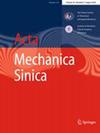Abnormal biomechanics plays a central role in the development of knee osteoarthritis (KOA). Low-intensity laser therapy (LILT) is considered an applicable method for the treatment of osteoarthritis. Current research on LILT for the treatment of KOA has focused on the regeneration of articular cartilage. Its biomechanical changes in periarticular tissues have been less well studied, and its role in improving abnormal joint biomechanics is unclear. This study aimed to investigate the role of LILT in improving the biomechanical properties of muscle and cartilage in KOA joints to alleviate cartilage degradation. In this study, a semiconductor laser with a wavelength of 808 nm was used to perform laser interventions in a KOA rat model 3 days per week for 6 weeks. The results of muscle stretch tests showed that LILT could significantly reduce the modulus of elasticity of KOA soleus muscle. Hematoxylin and eosin staining showed that LILT significantly increased the cross-sectional area of the soleus muscle fibers. This suggests that LILT alleviated KOA-induced soleus muscle atrophy and restored the mechanical properties of the muscle tissue. The results of compressive elastic modulus and electrical impedance characterization of cartilage showed that laser intervention significantly increased the elastic modulus and resistivity of cartilage. Results from safranin o-fast green staining and immunohistochemistry showed that LILT significantly increased the synthesis of type II collagen in the cartilage matrix. This may be one of the potential mechanisms by which LILT improves the mechanical properties of cartilage. In addition, immunohistochemistry also showed that LILT reduced the expression of matrix metalloproteinase-13 in cartilage and effectively inhibited the degradation of the cartilage matrix in KOA. In conclusion, the present study demonstrated that LILT alleviated the abnormal biomechanics of KOA joint tissues by improving the mechanical properties of joint muscles and cartilage, thereby slowing down the degradation of KOA cartilage.


